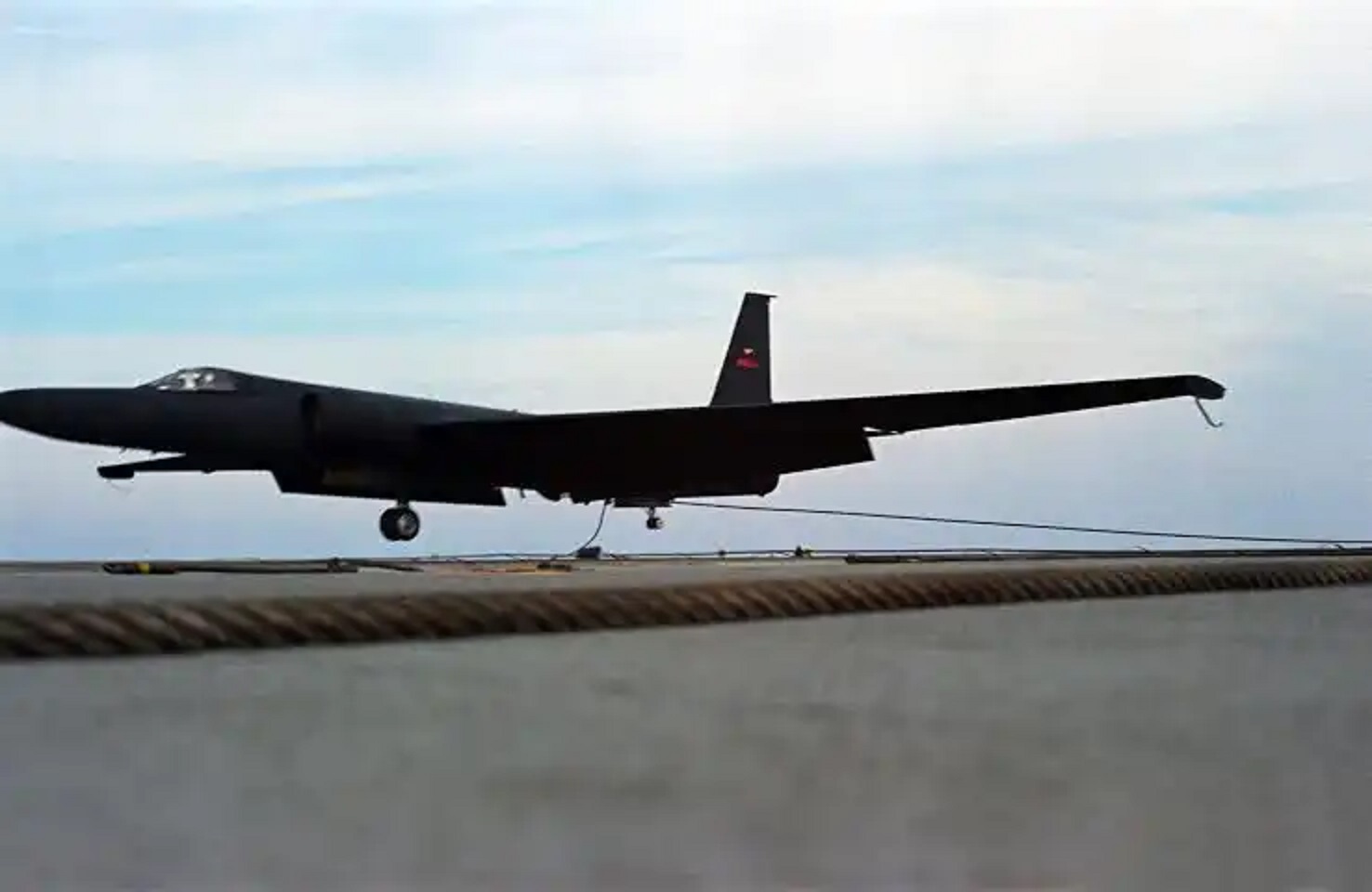During the height of the Cold War, the geopolitical chess match between the United States and the Soviet Union demanded unprecedented levels of intelligence gathering. Aerial reconnaissance became a cornerstone of American strategy, offering a way to peer behind the Iron Curtain without direct confrontation. At the center of this effort was the Lockheed U-2, a revolutionary high-altitude spy plane conceived by legendary engineer Clarence “Kelly” Johnson and his team at the famed Skunk Works division.
Flying at altitudes exceeding 70,000 feet, the U-2 soared above the reach of most Soviet radar and surface-to-air missile systems. Its long, slender wings and lightweight frame allowed it to glide silently across hostile territory, capturing photographic intelligence critical to national security. But on May 1, 1960, the illusion of invincibility was shattered when pilot Francis Gary Powers was shot down over Sverdlovsk. The incident exposed the covert surveillance program, triggered a diplomatic firestorm, and abruptly halted further U-2 overflights of Soviet airspace.
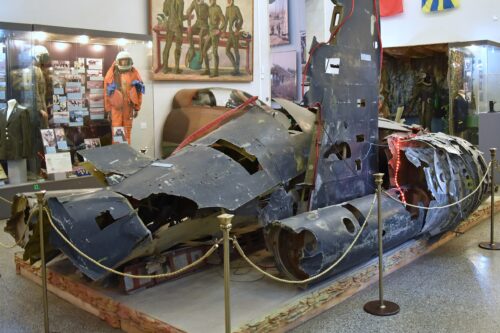
Taking the U-2 to Sea
Faced with the loss of access to foreign airbases and the growing sensitivity of international borders, U.S. intelligence agencies began exploring radical alternatives. One of the boldest ideas was to launch the U-2 from aircraft carriers, floating airfields that could be positioned anywhere in the world. This concept promised global reach without the entanglements of foreign diplomacy. Thus was born Project Whale Tale, a secret initiative to transform the U-2 into a maritime reconnaissance platform.
Engineering the Impossible
Adapting the U-2 for carrier operations was a feat of engineering audacity. The aircraft’s original design favored long, stable runways and minimal turbulence. Its fragile landing gear and 103-foot wingspan were ill-suited for the compact, constantly shifting decks of Navy carriers. In 1963, the CIA turned to Kelly Johnson once again, tasking him with the seemingly impossible: make the U-2 carrier-capable.
Johnson responded with characteristic brilliance. He reinforced the landing gear to absorb the shock of carrier landings, added arresting hooks to engage the ship’s cables, and modified the wing structure to withstand the chaotic airflow over the deck. Most remarkably, he eliminated the need for catapult launches by fine-tuning the aircraft’s weight and thrust, enabling it to take off under its own power. The result was the U-2G, a specialized variant built for the sea.
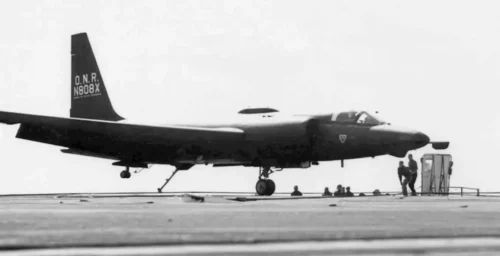
First Flight Trials
On August 3, 1963, the USS Kitty Hawk became the stage for one of the most daring flight tests in Cold War history. Off the coast of San Diego, a U-2G roared down the carrier deck and lifted into the sky without a catapult. The launch was a triumph of engineering and piloting skill. But the landing was another story. The aircraft bounced violently upon touchdown, damaging a wing and revealing the inherent risks of carrier recovery.
Despite the setback, the test proved that carrier-based U-2 operations were technically feasible. Further trials aboard the USS Ranger and USS America refined the process, demonstrating that with ideal conditions and expert pilots, the U-2 could operate from the sea.
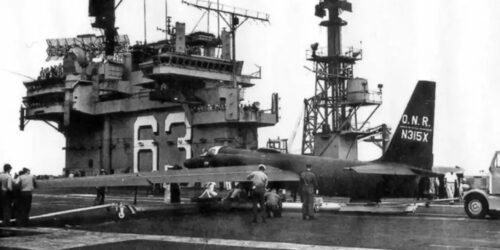
Strategic Utility and Global Reach
Project Whale Tale’s true value lay in its strategic flexibility. By launching from carriers, the U.S. could conduct surveillance missions in regions where land-based operations were politically sensitive or geographically impossible. One of the most notable deployments occurred in the late 1960s, when a U-2G launched from the USS Ranger to monitor French nuclear tests at Mururoa Atoll in the South Pacific. The mission gathered vital intelligence without violating foreign airspace or relying on allied bases.
Carrier-based U-2s offered rapid response capabilities, reduced dependence on host nations, and the ability to operate in contested zones. Yet the concept never saw widespread adoption. The risks of carrier landings, the logistical burden of maintaining U-2s at sea, and the emergence of satellite reconnaissance gradually rendered Project Whale Tale obsolete.
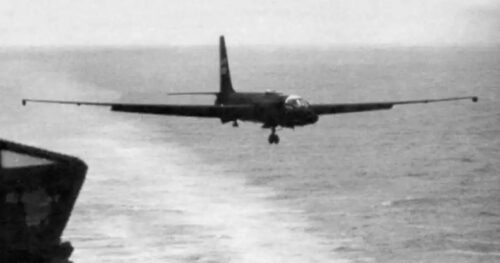
Lasting Legacy
Though short-lived, Project Whale Tale remains a tribute to American ingenuity. It showcased the power of interagency collaboration between the CIA, the Navy, and Lockheed, and the willingness to challenge conventional limits. The project influenced future reconnaissance strategies and proved that even delicate, high-performance aircraft could be adapted for maritime use.
Its legacy endures in the evolution of U-2 variants and the broader doctrine of flexible basing. In an era where geopolitical tensions continue to shift, the lessons of Whale Tale—mobility, adaptability, and innovation—remain as relevant as ever.
Final Thoughts
Project Whale Tale occupies a unique chapter in Cold War aviation history. Born from crisis and driven by necessity, it pushed the boundaries of what was possible with the U-2 platform. While it never became a standard operational method, it exemplified the relentless drive of U.S. engineers and intelligence officers to maintain strategic advantage. In doing so, it left behind not just a technical achievement, but a legacy of daring and vision.
Resource
